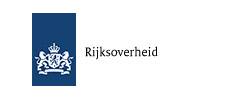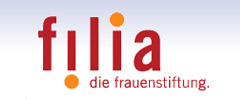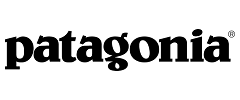WECF in Newsletter Fondation Ensemble
WECF on Ecological Sanitation as a new approach in Romania and Ukraine
07.12.2006 |Anne Barre

Specification sheets - December 2006 - If you cannot read this message, you can read it online.
Specification sheets - December 2006
- Introduction
- Ecological Sanitation, A new approach
- Ecodess: an alternative sanitation in Peru
- Wastewater treatment system using biological filtration
Here are a few examples of techniques that seem to have hit on the right compromise between the struggle against poverty of vulnerable populations and conserving the natural milieu.
- WECF reminds us of the basic principles of environmental sanitation: deviation, storage, use of compost;
- Juan Carlos Calizaya, social entrepreneur elected to the Ashoka fellowship, presents his ECODESS environmentally-friendly sanitation system that links the individual and the group;
- Care proposes to share an experience tested at an altitude of over 3,800 m, with rural populations in the Andes: wastewater treatment system using biological filtration.
Details are available on our website, along with those we have already proposed, particularly in relation to the use of solar energy, as a means of fighting poverty.
Remember, the next project selection commission will take place in spring 2007. Don’t hesitate to send in your project as soon as possible, and, in any case, no later than
Monday March 12, 2007.
Ecological Sanitation, A new approach
Thanks to Anne Barre for sending us the presentation of ecosan toilet.
- An ecosan toilet is environmentally friendly and saves costs.
- An ecosan toilet is a high quality solution, especially for villages / communities without drinking water or sewage system.
- Ecosan toilets do not necessarily need any water for flushing.
What makes urine diverting toilets special?
Urine diverting toilets do not mix urine and faeces. Both materials are collected separately and treated adequately. Urine is collected and used in a reservoir. Feaces are collected in a chamber and directly covered with dry material (a mixture of ashes or lime and soil or woodchips). (see figure below) Because of the separation system, ecosan toilets do not smell, they can be installed inside homes and they do not need a connection to a water supply or sewage system.
Are dry urine diverting toilets safe ?
Composting kills faecal bacteria: storing the faeces for at least one year and composting them will kill the bacteria (sanitisation). Urine storage for six months removes bacteria: the urine of a healthy person is sterile, however, we are ill sometimes in our life.
Therefore, to be safe, urine must be stored. For a household, storage of one month is suggested. For schools, public toilets, storage of at least six months is required, in order to remove low concentration of micropollutants.
Urine is an excellent fertiliser, approved by the WHO
Urine is rich in nutrients that can be used in agriculture and horticulture. The World Health Organisation has approved the use of urine in agriculture after sanitation through storage. The urine collected from 30 persons during one year can fertilise one hectare of land. Before planting, urine can be applied undiluted on the soil. One crops are growing, urine should be applied diluted with water (1part urine / 3 parts water)
Composted material is a good humus
The composted faeces is an excellent soil conditioner and can be mixed or covered with soil prior to sowing or planting. It is rich in phosphorus, potassium and organic matter.
Health precautions
To be completely on the safe side, apply these three rules:
1.do not apply urine or compost directly on vegetables
2.do not apply urine or compost one mont or less before harvesting
3.wash your hands after application or after handling with the toilets
Ecodess: an alternative sanitation in Peru
Thanks go to Mr Juan Carlos Calizaya for sending us the presentation of the ECODESS system designed by Peruvian organization CENCA. The ECODESS system (Ecology and Development with Sustainable Sanitation): an ecological sanitation system from individual homes to the quarter.
Technically:
- Each home is equipped with complete sanitation services (eco–toilet, urinary, wash basin and shower), a wash-house and a waste water collection network. The collection network leads to a grease trap and a bio-filter which are used to turn the waste water into water that is of a sufficient quality for use in irrigation. The eco–toilets take the form of a toilet bowl with a urine separator, with chambers or containers underneath for storing excreta, to which a drying agent is added. - At the level of the quarter, a second external collection network retrieves the treated waste water from all the homes using the ECODESS system and leads it to a reservoir, which in turn is connected to an underground irrigation network for the upkeep of parks and gardens.
Wastewater treatment system using biological filtration
Thanks go to Benjamin Lacroix-Desmaze for this outline of the wastewater treatment system using biological filtration as implemented by Care in Peru -
The wastewater treatment system using biological filtration implemented in San Jose, Peru, is used to purify wastewater at over 3,800 meters above sea level. The water from local homes runs through several tanks lined up alongside each other: First tank, the water runs through a first filter which removes large debris; solid matter, which sinks to the bottom of the tank, is evacuated; In the second tank, oil and other liquid waste is collected from the surface of the water: this is called de-oiling; In the third tank, the solid matter still dispersed in the water sinks to the bottom of the tank.
Each of the tanks has cleaning valves that send the solid matter that gathers at the bottom of the tank to a reservoir. A micro-biological process converts this waste into methane, carbon dioxide and a harmless substance similar to humus. These remains are then removed manually or pumped out and used outside the tank for agriculture. When the water has gone through the three tanks, it reaches a biological filter (porous stones containing aerobic bacteria) where it becomes oxygenized and purified.
Finally, the water reaches a last reservoir in which an artificial aquatic ecosystem has been created: the presence of aquatic plants (reeds) constitutes an effective means of absorbing the excess nutrients contained in the water coming from the biological filter (or reactor). The water can then be used for agricultural purposes.


































